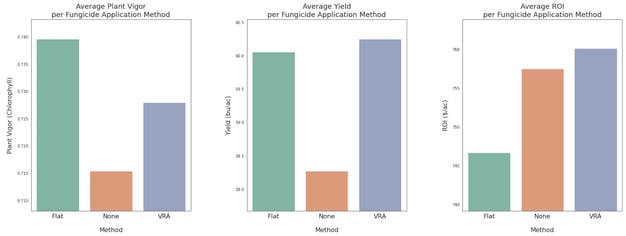Each year, soybean growers strategize ways to maximize their crop yield and profit. Combatting diseases like white mold—caused by the fungus S. sclerotiorum—is an essential part of that planning: if left unmanaged, white mold can lead to lost yield and lost revenue.
Fungicide is an effective way to combat white mold, but there are management challenges to efficient and sustainable use of this input. Too little fungicide, and plants will succumb to disease. Too much, and the cost unnecessarily eats into farm profits.
This is where a variable rate application strategy can prove useful.
White mold on a soybean plant. (Crop Protection Network)
In variable rate application (VRA), growers differentiate parts of a field based on a particular characteristic. In the case of fungicide application, that characteristic is the canopy’s disease risk.
Using this method, only vulnerable areas of the field receive treatment—as opposed to flat-rate application, in which fungicide is applied everywhere. A VRA approach offers growers the ability to effectively fight off disease while reducing costs and the environmental impact of fungicide use.
VRA management zones generated from aerial data and viewed in the Ceres Imaging app.
Even so, growers face the challenge of establishing VRA zones that accurately represent conditions in the field. In the case of fungicide applications, it can be difficult to discern at ground level which areas of canopy actually require fungicide application. Given that, some growers also wonder whether it's really possible to depart from flat-rate applications of fungicide without hurting yield.
To test this, in 2020 we conducted trials of VRA management zones generated from aerial imagery to find out whether a VRA fungicide application method could achieve similar or higher yield and profit than flat-rate application.
In the experiment, a soybean field in Minnesota was divided into sections that received either VRA, flat-rate application, or no fungicide application. We measured plant vigor throughout the season, and crop yield at the end of the season. We then assessed the efficacy of each fungicide method in terms of crop health and ROI.
The VRA sections of the field ended up using 35% less fungicide than the areas with flat-rate application, yet achieved statistically equivalent plant vigor and yield. Overall, the VRA approach resulted in fungicide savings of $12 per acre.

In our study, the portion of the field treated with a variable rate application of fungicide produced yield statistically equivalent to the portion of the field that received a flat-rate application, despite using less fungicide.
In the context of the upward-trending soybean market, the return on investment for a VRA approach becomes increasingly favorable when compared to flat rate application .
Soybean prices have generally been rising since the end of 2020. (USDA National Agricultural Statistics Service Information)
Ceres Imaging will continue field testing to validate and quantify the benefits of VRA management zones generated from aerial data, with the goal of helping customers make more informed management choices for their operations. As VRA technology becomes more accessible, we anticipate aerial data will become an increasingly powerful tool in soybean growers' arsenal.
Claire Miles is a Ceres Imaging GIS/remote sensing analyst.
